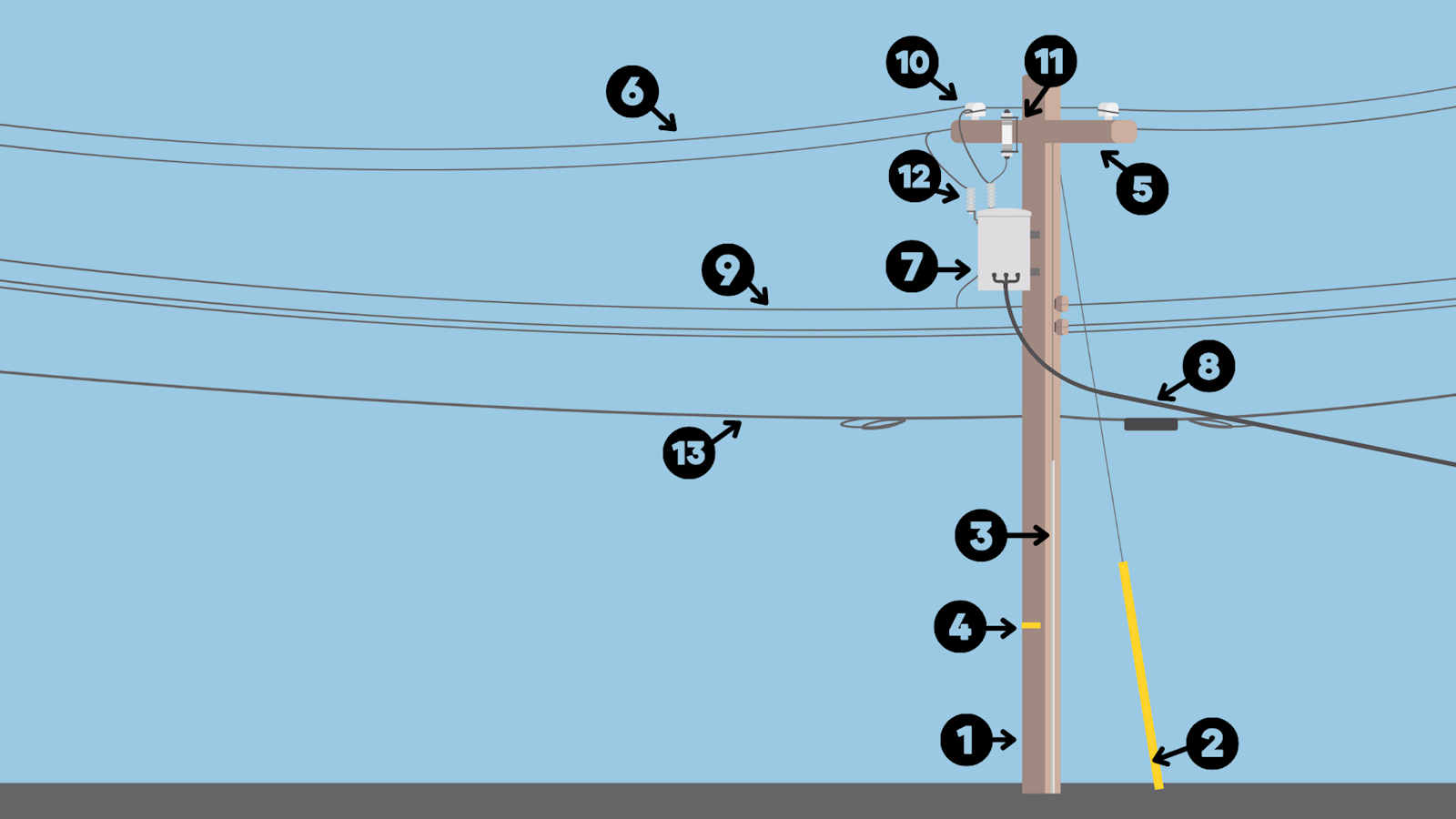What's On a Utility Pole?
Ever wondered what's on an electric pole?
This illustration shows the basic equipment on our distribution poles. Keep in mind that the exact equipment varies based on the pole's location and what purpose it serves in the electric grid (for more on how the grid works, check out teammidwest.com/electric-grid).

- Pole - Range in size but are always buried underground with a depth of 10% of their length + 2 feet.
- Guy Wires - Help stabilize poles and are connected to the pole's ground wire.
- Ground Wire - Runs along the pole and connects to the neutral wire. Safely directs electricity from lightning to the ground.
- Pole Information Tags - Provide us with the exact location of the pole and attached equipment.
- Crossarm - Holds powerlines above the ground and apart from each other.
- Primary Wires - Run on top of the pole, each carrying 7,200 volts of electricity from a substation.
- Transformer - Converts electricity from primary wires to a lower voltage of 120/240, getting it ready to bring into your home.
- Secondary Service Drop - Carries 120/240 volts of electricity into your home.
- Neutral Wire - Goes back to the substation and balances out the amount of electricity on the system.
- Insulators - Prevent energized wires from touching each other or the pole.
- Cutouts - Open when there's a problem on the line, breaking the flow of electricity like a fuse to prevent further damage to the system.
- Surge Arresters - Protect the transformer from lightning strikes.
- Lowest Wires - Typically carry telephone, cable TV, and fiber internet signals.